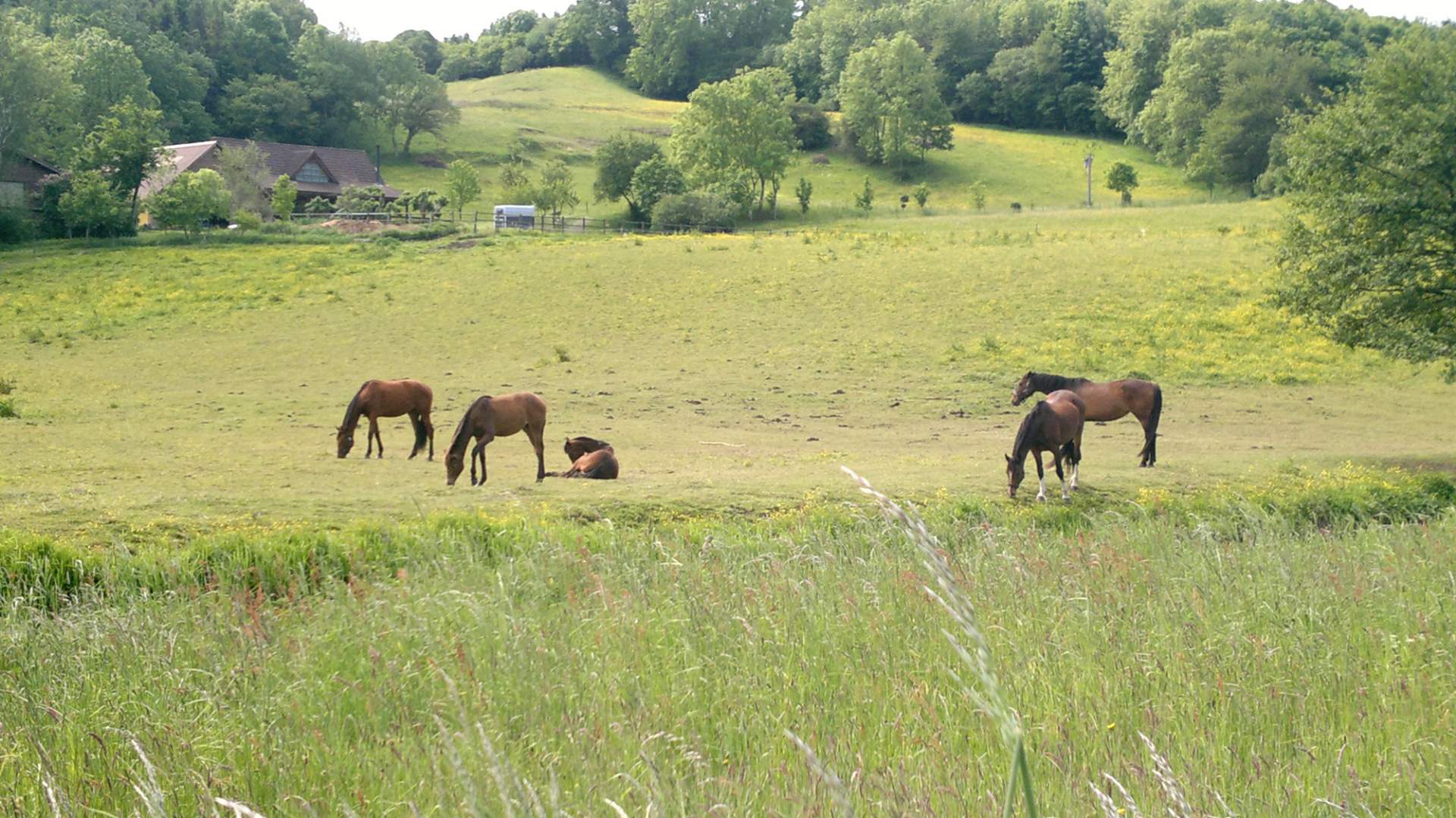Menu

The more hours your horse gets to spend outside, the less risk of an injury. It is one of my mantras both as a veterinarian, but also as a regular horse owner. Because field-time is free training. But, unfortunately, many of the injuries, horses are in the risk of getting, occur due to lack of field time. They have too much energy stored up and they run around on the pasture bucking of pure joy. It is so unfortunate, because the intention behind letting the horse out is right and commendable, but the result is unfortunately an injured horse instead of a strengthened horse.
Injuries in connection with - or due to training are also reduced when the horse is out for most hours of the day. When many of us train our horse, it is often either for the purpose of assembly and to enhance performance. Unless the muscles and tendons are strong and supple enough, the risk of microtrauma, which eventually leads to arthritis and tendon injuries, is very high.
When horses are stalled for many hours, their muscles and tendons are weakened, which is why they break even more easily when they run around bucking in the field. My horses stay outside day and night - and I have never had an injured horse.
Free movement strengthens bones, tendons and muscles and not least the horse's mental health. Horses are not made to be inside in a small stall, but to walk around, 16 to 20 hours a day and graze.
My crazy young gelding, who stands on one leg the moment this picture was taken. I would never be able to train him to do that. It may not be necessary either, and yet; the horses use their bodies quite differently without a rider on their backs and use muscle groups that we will never be able to make them to use under our influence.
On the field with good friends and space enough for everyone, our horses do both yoga and strengthening activities all by themselves. It is well and truly free training and training that you will enjoy when riding your horse.
Everyone benefits from movement. Of course, this is not new to any of us. But horses especially enjoy movement, as their venous pump only works in motion. Free movement increases the blood circulation, and this is important for all organs of the body. All the body's organs, muscles and tendons need the oxygen molecules the blood carries around the body. Muscles get tired and sore when they do not get enough oxygen.
The venous pump is a mechanism that makes the blood from the veins of the body return to the heart. The contraction of the muscles in the arms and legs ensures that the venous blood can be directed against gravity and back to the heart and is therefore most effective in movement.
People may sit down or lie down and do exercises like tilting their feet or the like to activate the venous pump. But it just does not work this way with horses. The horse's venous pump only works every time the horse takes a step and the more steps at different tempos, the more efficient the venous pump works.
If the venous pump does not work, the legs swell, as the veins, together with the lymphatic system, cannot get rid of fluid and waste. And it hurts - just ask a pregnant woman or an elderly lady or man who sits a lot. Their legs swell, and can feel sore when the congested fluid distends the skin, causing pressure on the muscles and tendons. The same goes for our horses - if the vein pump is not activated.
In the stall, the horse’s movements are limited. Often, they do not move their legs much, even when they turn around. And many horse legs thus swell, when the horse is stalled for several hours at a time.
If you have a stabled horse, and not a field-kept one, you can easily do something to improve the situation. Try to count how many hours your horse is in its stall. For example, a horse that will be let out at eight o'clock in the morning and in again at 4 o'clock will be stalled 16 hours a day. Maybe you ride an hour in the evening, but still, it is a lot of hours being inactive.
If you have the horse stalled in a place where it is not possible to be out many hours during a day, you can help the horse by riding outside the field time. That is, if the horse is outside during the light hours of the day, then ride in the evening. On the weekends you and your horse may have time to go for a long walk in the early morning or late at night and then ride it in addition to the walk.
As you can read in this blog post, there are only positive reasons why you should let your horse spend as much time as possible on the pasture. Not just a few hours a day, but for many hours. Because field time is free training.
Here you have the greatest benefits for your horse:
And remember: Not all pastures are inviting movement, so make sure the horses have an interesting pasture, where they bother to move (typically after grass, hay or playing with other horses).
Source: Veterinarian Heidi Nielsen, Horse Dentist & Chiropractor
Heidi Nielsen is educated at the University of Copenhagen in 2009 and a clinical practitioner from 2009-2012. She is also certified Chiropractor for animals by the International Veterinary Chiropractic Association (IVCA). Heidi is also a writer, lecturer and workshop provider. She has completed training in dental treatment, physical therapy, acupuncture, postural rehabilitation, cranio sacral therapy, osteopathy and Equine Touch.